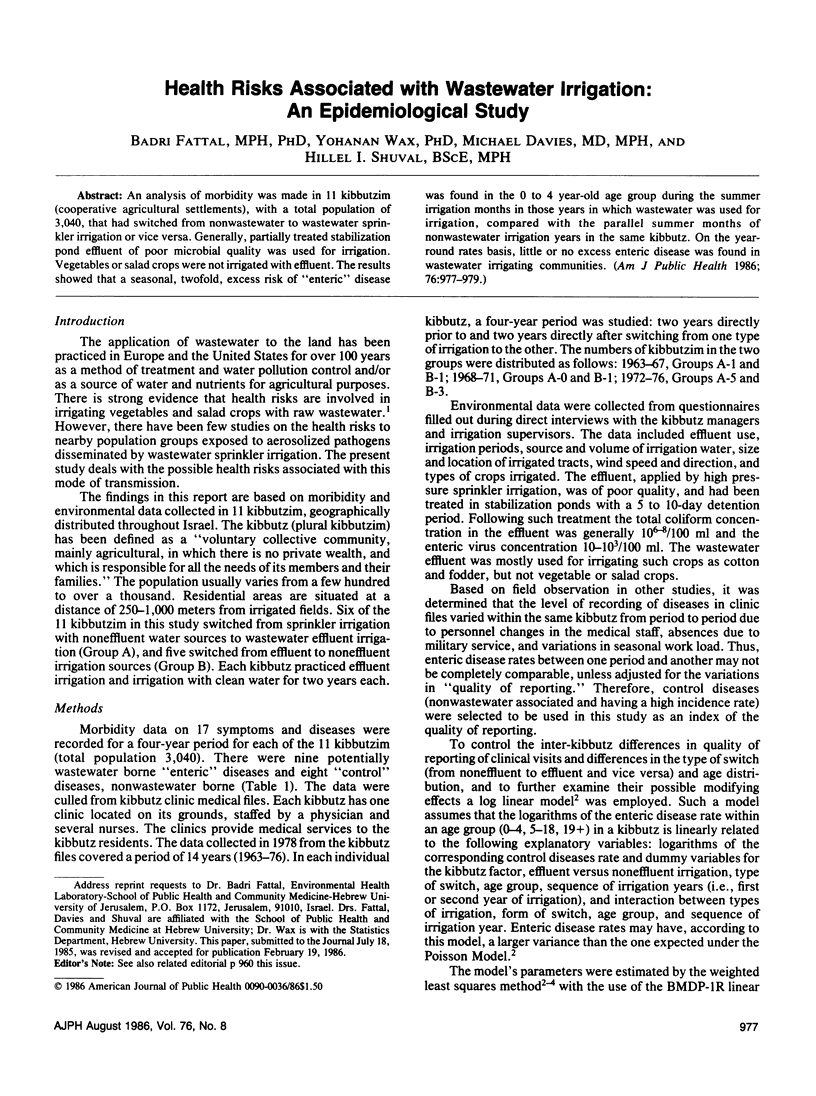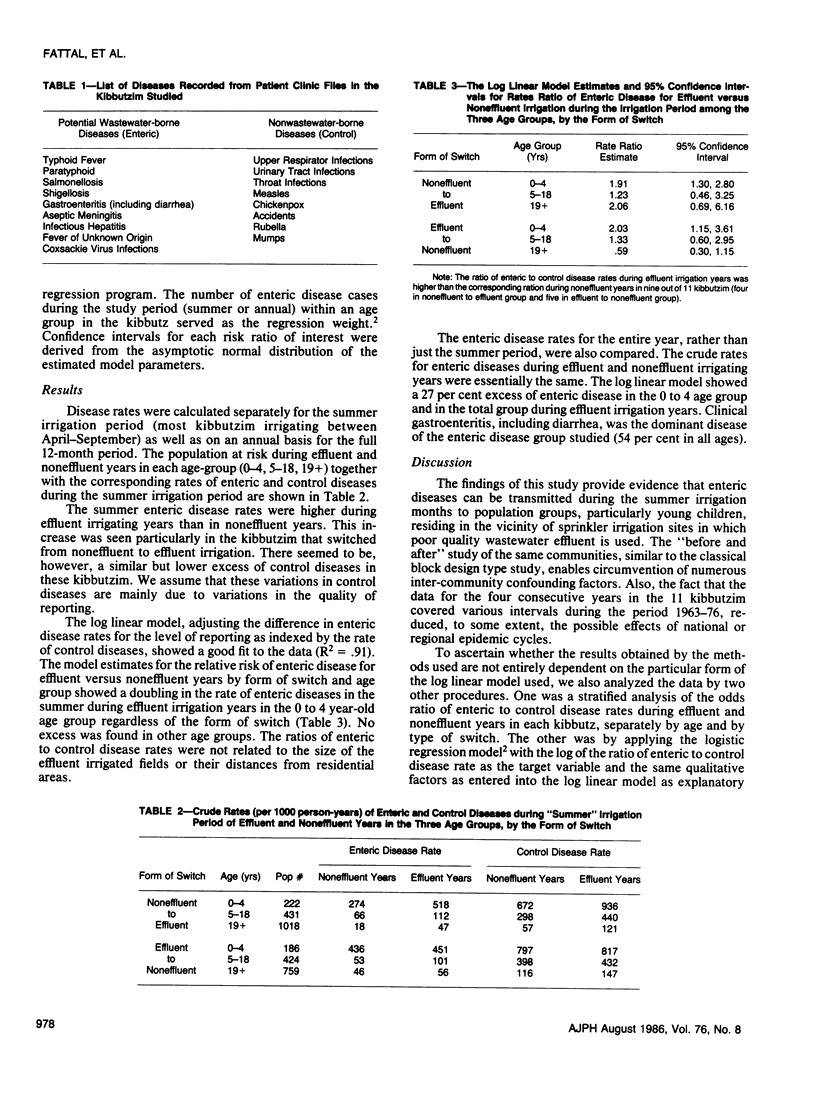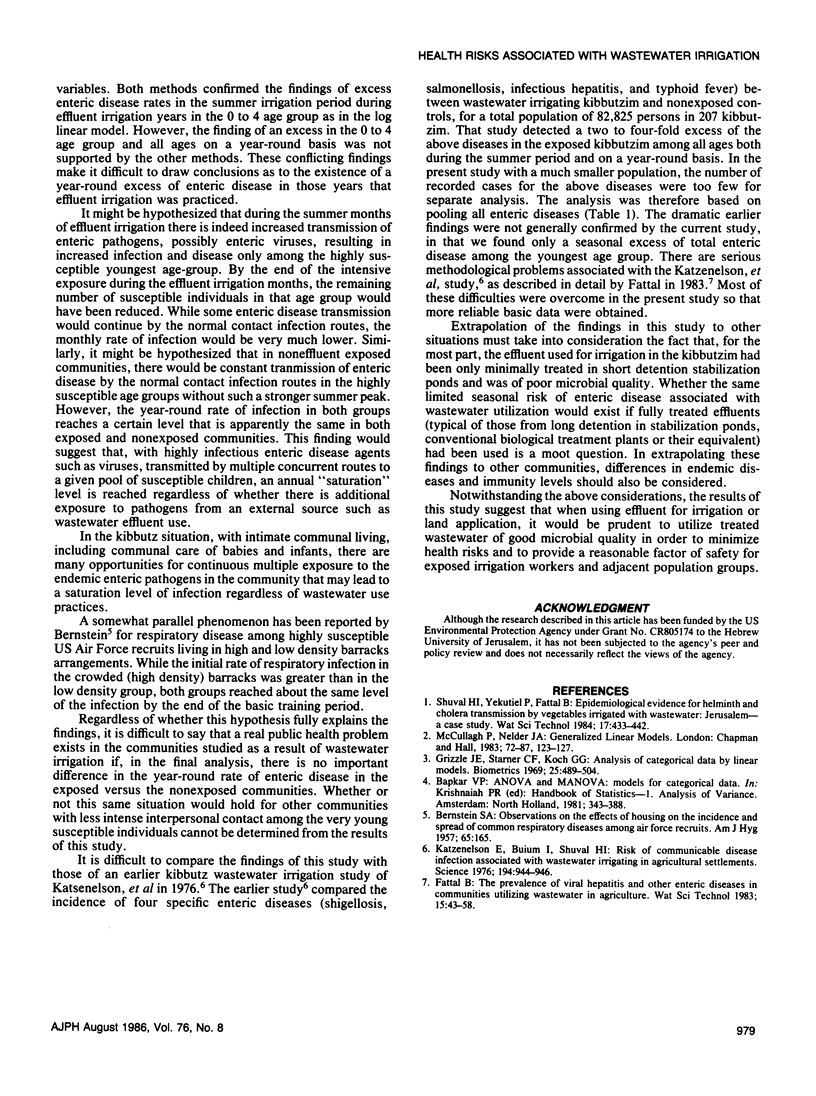Abstract
An analysis of morbidity was made in 11 kibbutzim (cooperative agricultural settlements), with a total population of 3,040, that had switched from nonwastewater to wastewater sprinkler irrigation or vice versa. Generally, partially treated stabilization pond effluent of poor microbial quality was used for irrigation. Vegetables or salad crops were not irrigated with effluent. The results showed that a seasonal, twofold, excess risk of "enteric" disease was found in the 0 to 4 year-old age group during the summer irrigation months in those years in which wastewater was used for irrigation, compared with the parallel summer months of nonwastewater irrigation years in the same kibbutz. On the year round rates basis, little or no excess enteric disease was found in wastewater irrigating communities.
Full text
PDF


Selected References
These references are in PubMed. This may not be the complete list of references from this article.
- Grizzle J. E., Starmer C. F., Koch G. G. Analysis of categorical data by linear models. Biometrics. 1969 Sep;25(3):489–504. [PubMed] [Google Scholar]
- Katzenelson E., Buium I., Shuval H. I. Risk of communicable disease infection associated with wastewater irrigation in agricultural settlements. Science. 1976 Nov 26;194(4268):944–946. doi: 10.1126/science.982051. [DOI] [PubMed] [Google Scholar]


